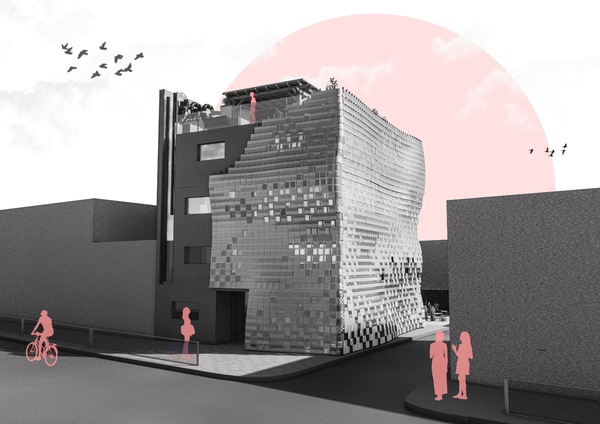Stitching Sustainability: Exploring the Intersection of Fashion and Architecture to Combat Climate Change
With climate change approaching a critical tipping point and the built environment responsible for 40% of current carbon emissions, with the fashion industry contributing a further 10%, my project, Stitching Sustainability, aims to address this pressing issue by leveraging a circular economy approach within fashion and architecture. Located in Attercliffe, Sheffield, the project centres on establishing a sustainable fashion hub dedicated to diverting textile waste from landfills and instead, encouraging a sustainable upcycling process.
Through in-house studios, designers can repurpose donated textile waste into new garments, artwork, upholstery, and more. These creations are sold in a street-facing retail space, sharing profits among designers, staff, and building maintenance. Additionally, they are exhibited in a multifunctional rear hall space, fostering further education, charity events, and the celebration of design talent. Other amenities include exposed storage and treatment labs, a large public design classroom, and affordable hostel space, fostering community connections and encouraging exploration of Sheffield's suburbs. Moreover, a rooftop events space accommodates larger exhibitions and shows.
The project developed further to explore the integration of a second skin facade, investigating the impact of fashion on architectural form. Inspired by the intersection of fashion and architectural trends, I developed my concept of the ‘façade of the body’, using research into garment design to guide my translation of shapes and textures from the fashion industry into façade iterations. The second skin aims to enhance climatic conditions by reducing solar gain and glare whilst also acting as a weathering shield, aiding the longevity of the main structural system and ultimately reducing operational carbon emissions. Additionally, the facade reflects the building's program to the wider public, symbolising the integration of fashion and architectural design whilst utilising locally salvaged steel, paying homage to Sheffield's industrial past, further reinforcing the project's sustainability-driven ethos.


